MythForce Review
PC
Conquer the Castle of Evil as 80’s cartoon heroes and relive some old nostalgia with friends.
Reviewed by R3GR3T on Sep 14, 2023
Ever heard of the Enhanced Editions of Baldur’s Gate and Icewind Dale? This is where Beamdog made their claim to fame, though not for developing the original versions of some of the older and beloved titles but for bringing them to the modern age. Beamdog, one of the more obscure studios situated in Canada, founded in 2009 by game development veterans Trent Oster (BioWare’s Co-founder) and Cameron Tofer (Former BioWare Lead Programmer); they set out to revive some of the older titles and giving them some new life.

Now, Beamdog doesn’t just revive old titles; they also made originals like Axis & Allies Online in 2021, an interesting perspective and recreation of a board game brought to PC. However, their latest creation, MythForce, which released on 12 September 2023, might net them another massive round of applause and have 80’s cartoon fans blowing up their fanbase with the game’s design and gameplay. MythForce isn’t your everyday RPG First-Person Hack and Slash; it’s also a refreshing perspective on being a roguelike. So, grab your cozy blanket and some popcorn, maybe even a sword… You’re not just watching the cartoon; you’re taking control of the characters to stop a great evil.
Your epic adventure in MythForce starts off with a classic 80’s intro cinematic drenched in synth-wave and a lot of vague cuts, not at all meant to give you a decent idea of what’s going on and more meant to just get you hooked from the start… And it works too well. On the other hand, you’re also briefly shown each member of the MythForce team during the cinematic and a quick glance at what they’re capable of. Even though the cinematic is vague beyond, you’ll soon come to realize that that each member of the MythForce team also has a nemesis shown in the cinematic, though this becomes apparent as you play through the story.
Next up, you get to pick your hero. Now, they might be limited to just 4, but there’s really no reason to underestimate them. Each hero has their own unique playstyle and set of abilities that give each of them their own place in battle. Though this might seem a bit odd, each hero also has a difficulty. However, you shouldn’t take this lightly, as their difficulties are real and can severely impact a game if you’re not used to the hero. So, it would be wise to take each one for a test drive before jumping in with friends or going solo, but that’s easier said than done.
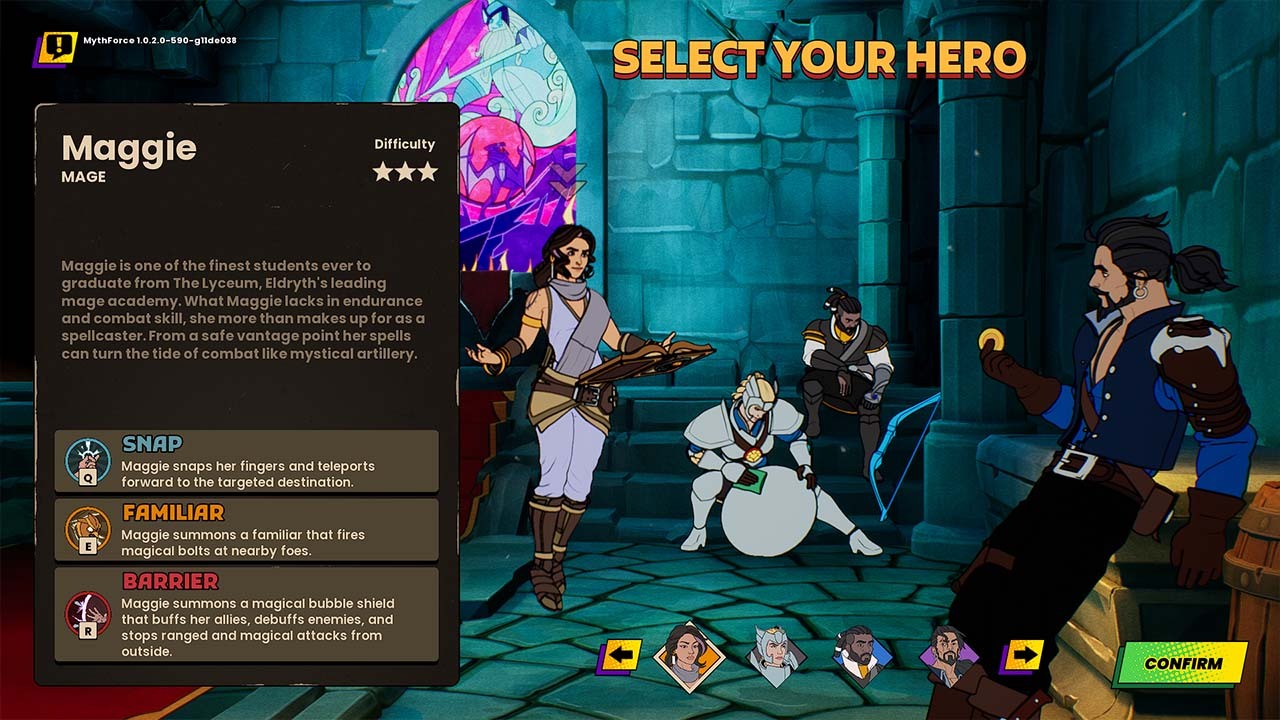
First off, we have the leader of the team, Victoria, the Knight, rated as an easy difficulty. In an RPG sense, Victoria would essentially play the role of a Tank, built to charge into the fray and draw enemy attention to her while the rest of her team does some good damage. Her abilities consist of the following – Vanguard, which allows her to charge into battle and knock enemies down. Sling Shield aims and throws her shield, which will bounce to other nearby enemies and break their defenses. Lastly, we have Lion’s Roar because any tank needs a way to draw attention to them, and Victoria does it with just this while gaining a nice damage boost.
Next to enter the fray is Maggie, the Mage, rated as difficult. Maggie isn’t your everyday mage, and even less so is she easy to play with; she might have some crazy damage-dealing capabilities, but she’s also a bit lacking on HP. What sets her apart is just how versatile her abilities are, with her first one being Snap: A short-distance teleport, great for getting out of sticky situations in an instant. Familiar: This allows her to summon a little extra firepower in the form of her familiar that will fire bolts at nearby enemies. And lastly, Barrier: Think of it as a bubble-sized shield that blocks most ranged attacks that will buff other heroes and debuff enemies inside of it, speed included.
Coming in from every direction while maintaining a safe distance, Hawkins, the Hunter, rated as easy. Maggie brings the magic, while Hawkins brings his own magic with a bow and arrows; while just as versatile, he’s a great damage dealer with some good crowd control. His abilities can help him survive when he uses Spectral Detour, which allows him to become ethereal (Ghostly), and he gets a nice movement speed bonus. The alternative is some monstrous damage and crowd control with Phantom Shot; he fires an arrow in a straight line that inflicts the Corrupted status effect on all targets hit and Rift Arrow for a convenient black hole that pulls enemies in and explodes.
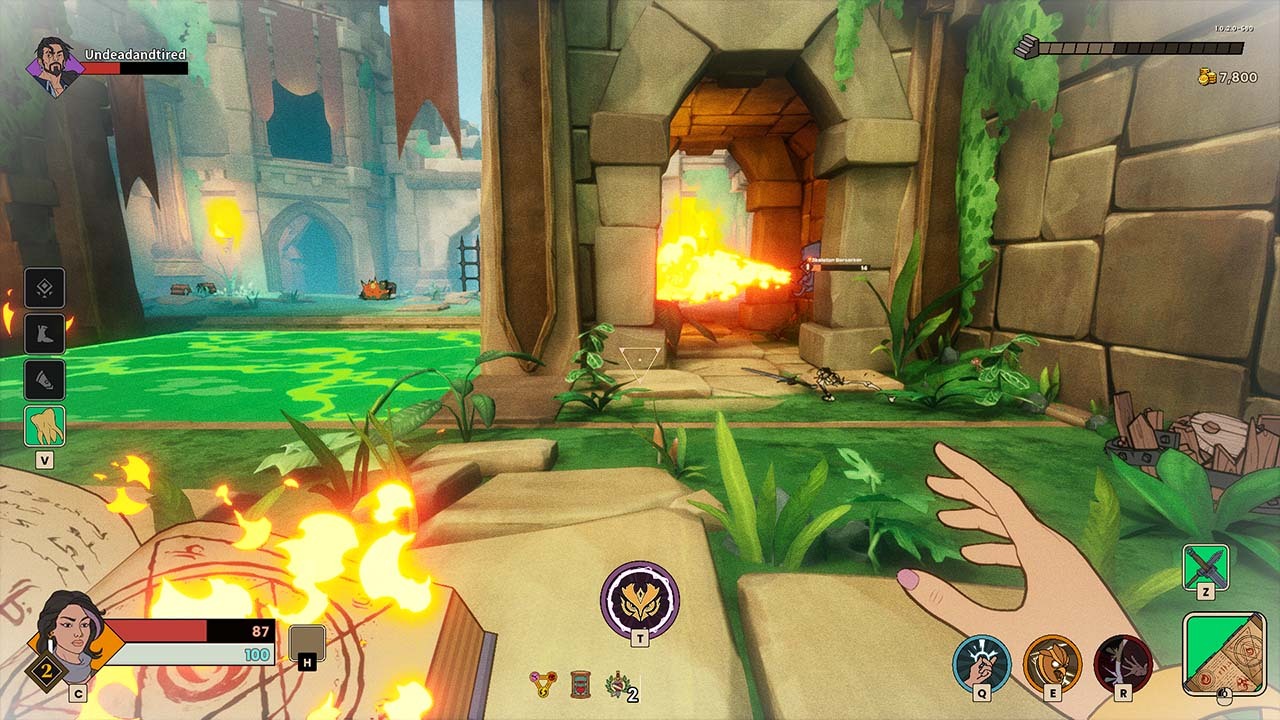
Lurking in the shadows and ready to fight dirty, we have Rico, the Rogue, who is rated at medium difficulty. A former general of our BBEG (Big Bad Evil Guy), Deadalus, Rico had a change of heart and switched sides by joining MythForce in hopes of atoning for what he did. He might have joined the forces of good, but it doesn’t mean he’ll stop fighting like a villain, and it comes in handy for him with abilities like Pocket Sand, which allows him to blind nearby groups of enemies. Then we also have Deadly Thrust, which causes Rico to leap forward and use his signature attack on the closest enemy. To finish off in true rogue fashion, he also has Backlash, a quick teleport behind your target for a devastating slash attack.
With that out of the way, you’re just about ready to jump into Episode 1 of MythForce. Yes, each level is an actual episode because this game is inspired by 80’s cartoons. Now that you can finally jump in, a little warning for this part would’ve been nice because the introductory tutorial is a lot to take in. Instead of being gradually introduced to everything, you’re instead given an overlay for all the controls and what they do, which is not easy to take in when you’re literally jumping into a game with friends.
On a slightly more interesting note, it’s also in that tutorial overlay where you learn that each character has a movement-based ability, too. For example – Maggie has Arcane Levitation, which allows her to slow her fall at the cost of Energy Points (EP) since fall damage is a thing in MythForce, and every bit of HP counts for a lot. Even though the massive flood of information for the tutorial is a less modern approach to gaming and good for the overall feel of the game, this might not have been the best idea to run with.
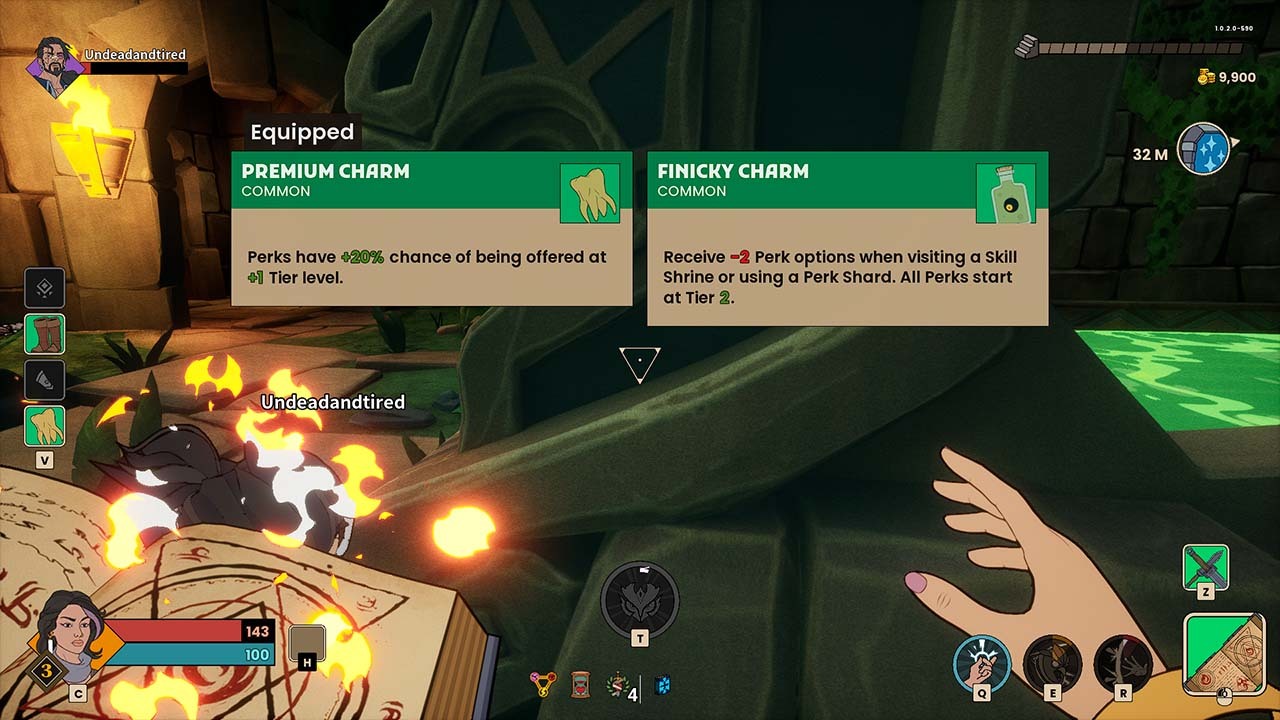
One other thing to keep an eye out for before you start skipping through the tutorial slides at breakneck speed if you didn’t turn them off after the first time, raising your level high enough gives you perks to choose from at the start of an episode. Perks are where MythForce takes a Roguelike approach and can make a run absolutely insane or an utter drag if you’re not paying attention, even if it does add a little randomness.
On the topic of Perks, you’ll also be happy to know that you’ll also occasionally find shards that can affect your abilities. Perks are great for passive bonuses that can give you raw boosts where you need them most. Shards, on the other hand, can change Maggie’s Snap, for example, into a short-distance teleport with a fun explosion at the end of it or make her Barrier a mobile shield that you can carry with you instead. This is all good and well, but you’ll also have to keep in mind that your perks will need to be upgraded for further bonuses because they all start at Tier 1.
MythForce seems to give you customization options out of every orifice it can find, even though it doesn’t exactly make it clear that you can do it, let alone upgrade perks. Before jumping into an episode, it would be wise to explore the buildings that seem to be part of the background; it turns out they’re not. Each building serves its own purpose, like The Conclave, where you can upgrade your perks if you have the gold for it. The Emporium is where you’ll get to upgrade the various trinkets you’ll pick up during each episode. Then there’s The Armory and The Sundisc; rejoice, you do get a few permanent bonuses and changes that don’t reset after each episode.
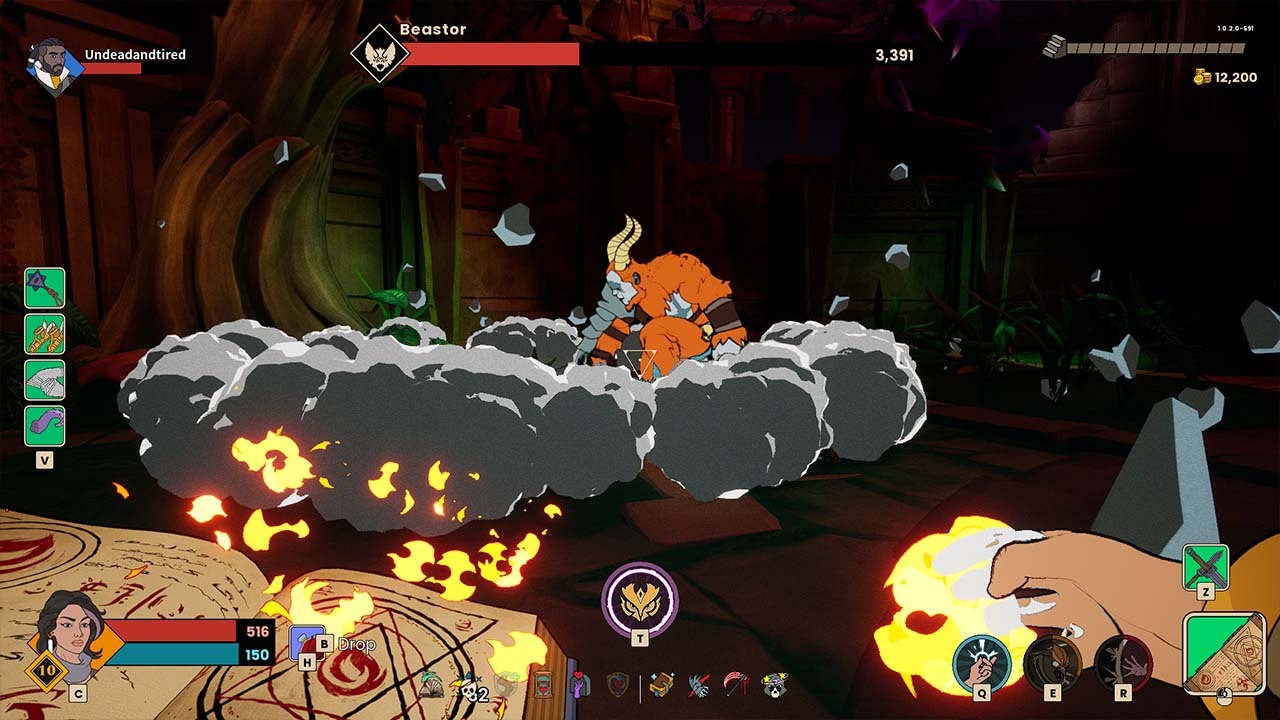
The Armory’s purpose is pretty obvious, you get to change your chosen Hero’s weapons and upgrade them too. However, you’ll also need gold for this endeavor. To throw another wrench in the works, you’ll also have to find Glyphs if you want to upgrade the building to unlock further upgrades. This mechanic, as a whole, is a nice way to keep you from rushing through the upgrades, but between Glyphs and gold, neither is easy to come by. You’ll end up using gold at Merchants during the episodes (Nothing is cheap), and Glyphs are obscenely rare unless you play the episodes on a monstrous difficulty.
The only building that seems to be slightly forgiving is The Sun Disc, your one-stop for smaller permanent bonuses that won’t cost you for everything you do, though you’ll need to find gems to socket into the constellations. The Sun Disc is a strange way of going at bonus stats since you’re socketing gems into each hero’s constellation; then there’s also the matter of combining huge numbers of gems for a slightly better bonus. Unfortunately, just like all the other buildings, you’ll still need glyphs to upgrade the building for further upgrades.
MythForce makes one thing quite clear in the early stages, you are in for a hell of a grind, either for Glyphs and Gold, or just for levels in each chapter. That’s right, you get to level up during the Episodes, and the levels make a difference to your HP, damage, and starting perks. Sadly, once you finish the chapter, your level resets, and you’re right back at the start. On a slightly less fun note, MythForce might look great at the surface, but it does still need a bit more work in terms of how enemies interact with your hero, controller support, and even co-op latency. Simply as an added stab, why the need to use Epic Online Services even though it’s installed through Steam? It’s literally using a launcher to launch another launcher just to launch the game… Confusing, right?
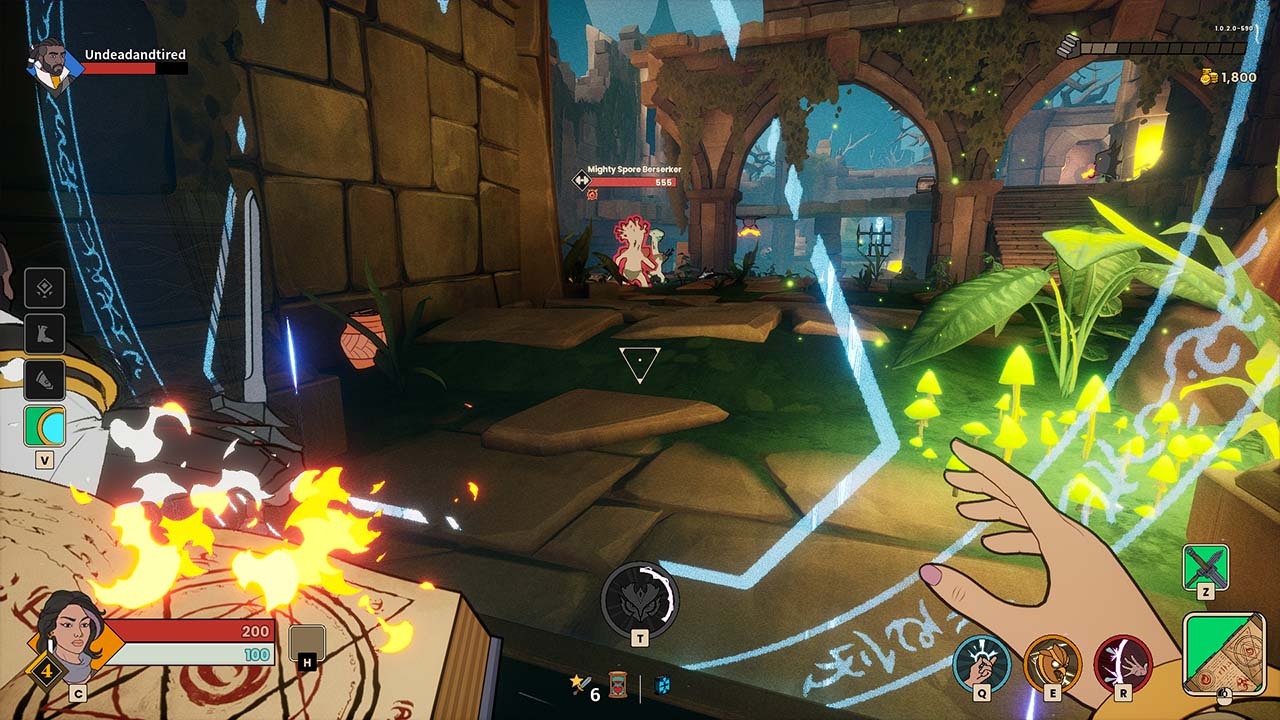
This goes without saying, MythForce might be one of the very few releases that really gets the nostalgia going with its visual design. Taking a lot of inspiration from 80’s cartoons for the actual gameplay and a little bit of comic book style for the UI, both come together to create an epic blast from the past with a little modern touch to it. It’s actually a little surprising to see just how well this was pulled off, considering this art style isn’t always matched as nicely as it should be. Granted, a little film grain made all the difference MythForce needed to be perfect visually.
On the hearing front, to match the visual side of MythForce, the background music fits everything perfectly. Again, keeping in mind that this very 80’s inspires, everything from the background music using a lot of Epic and synth-wave to the small things like magical sounds all match the theme down to the last letter and really build that atmosphere that makes you feel like you’re watching those cartoons from long ago again. While MythForce isn’t your typical RPG, there is some voice acting for the occasional party banter and boss confrontation as well to keep things interesting.
Overall, MythForce is a brilliant 80’s inspired game with nearly endless potential. While it does give you a lot to explore and discover, even more so to work with to take down your enemies, it falls a little flat, with the game being semi-unbalanced and overly grindy. A few simple quality of life and bug fixes might just take it to the top as a memorable release.
Editor, NoobFeed
Verdict
MythForce is a brilliant 80’s inspired game with nearly endless potential. While it does give you a lot to explore and discover, even more so to work with to take down your enemies, with the game being semi-unbalanced and overly grindy.
75
Related News
No Data.

